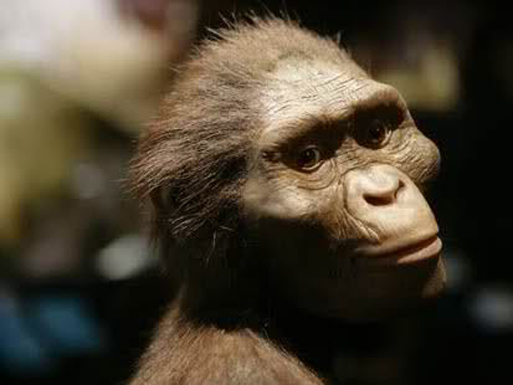November 24, 1974 - Lucy the Southern gibbon was discovered in Ethiopia
A discovered fossil has completely changed the views on how 'humans form. But who is Lucy the male ape, and why is she so important to human development?
November 24, 1974 - Archaeologists found Lucy instrument of humanity
Lucy was discovered in 1974 by archaeologist, Professor Donald Johanson , and his student, Tom Gray , at a canyon in Hadar in northern Ethiopia .
Johanson and Gray came to the area looking for animal bones in sand, ash and mud when they saw a small fragment of their bones.

Lucy the male gibbon is 1 to discover a thousand years
Johanson immediately recognized that bone as a hominid (hominid). When they looked at the hillside, they saw many other pieces of bone socks: Ribs, spine, femur and part of the jawbone.
They finally unearthed a total of 47 pieces of a skeleton, nearly 40% of a hominid, living 3.2 million years ago. Based on its small size, and pelvic shape, they concluded this was a 'she', and named her 'Lucy ' following the song ' Lucy in the Sky with Diamonds', the song. The Beatles played on the radio at Johanson and his group was celebrating their discovery at the campsite.

One of the mysteries that scientists have not been able to explain until now is the cause of the death of "Southern Lucy".
According to scientists' conclusions, Lucy is an adult woman but still very young, not seeing any damage or signs of old age.
Southern gibbon lucy is considered an unprecedented discovery in history, with great significance in the discovery of human evolutionary origin .
This is an extremely important finding, because it allows scientists to understand more about evolution from gibbons to modern humans today.
- Controversy about bringing prehistoric fossils Lucy out of Ethiopia
- Find out the cause of Lucy's death
- Discovering the world's smallest gibbon fossils lived 12.5 million years ago
- Discovered rare gibbon species in Indochina
- Ethiopia from the ashes becomes the fastest growing economy in the continent
- Lucy is about to explore the Solar System
- The heartbreaking story about Lucy, the chimpanzee thought he was a human
- Motherhood between dogs and gibbons
- People start going straight sooner than we think
- Discovered the 2,000-year-old remains of 'Sleeping Beauty in the Forest' in Ethiopia
- Discover a tiny gibbon
- Advocate to stop 'Los Angeles day of death'
 Biography of hero Vu A Dinh
Biography of hero Vu A Dinh History of hematology
History of hematology Who is Mr. Tam Da 'Phuc-Loc-Tho' and what does it mean?
Who is Mr. Tam Da 'Phuc-Loc-Tho' and what does it mean? Unbelievable facts about the history of the oil and gas industry: Gasoline used to be cheaper than water, so abundant that it had to be dumped into the river...
Unbelievable facts about the history of the oil and gas industry: Gasoline used to be cheaper than water, so abundant that it had to be dumped into the river...